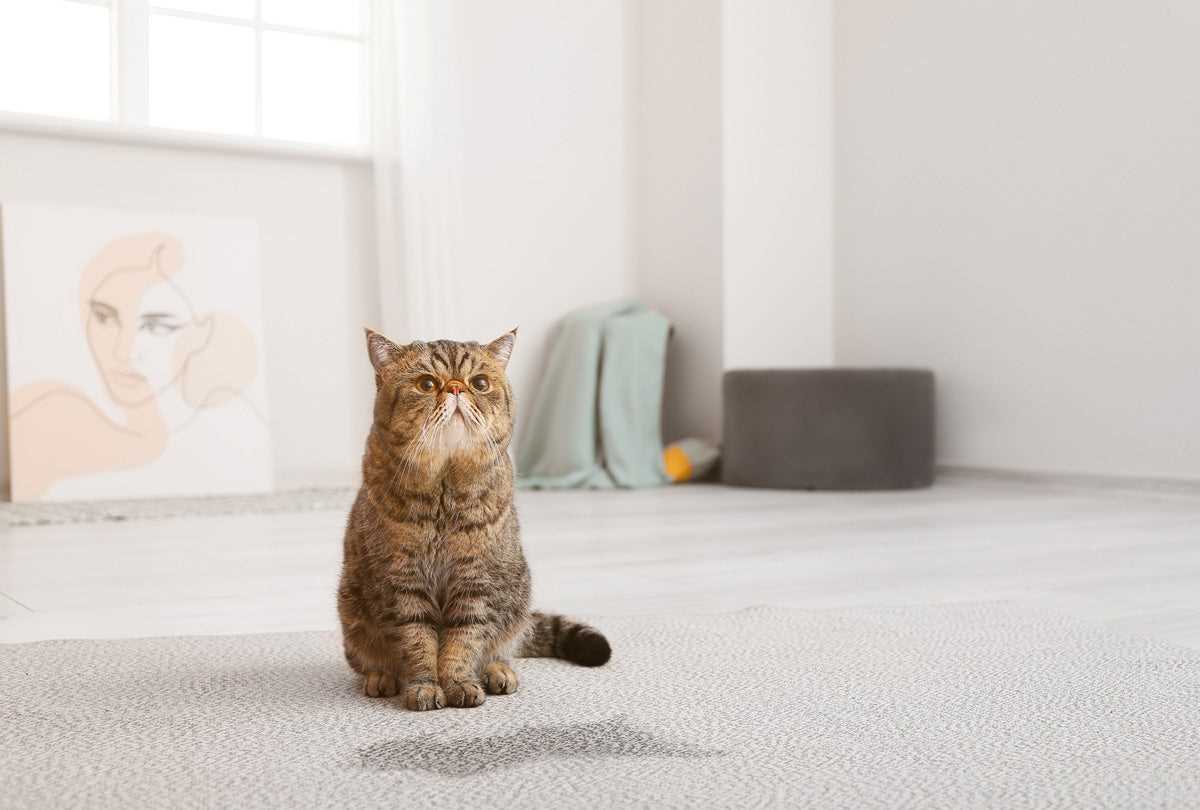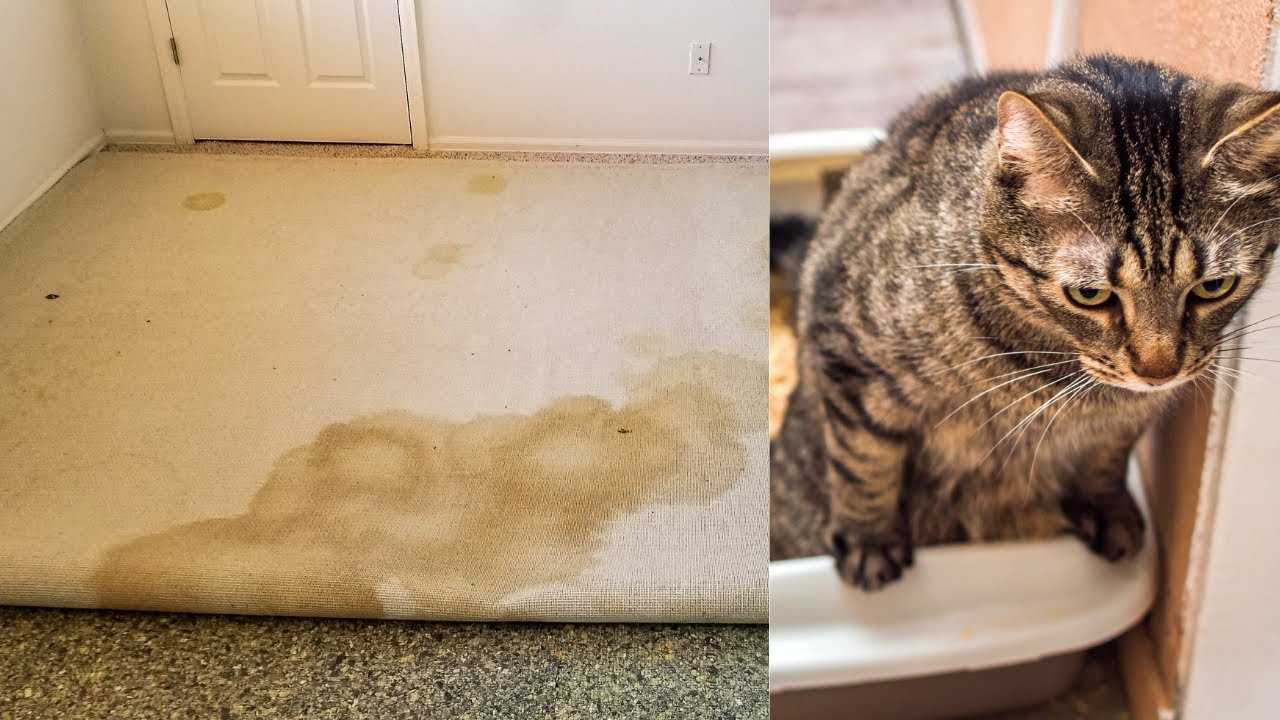

For immediate action, mix equal parts of white vinegar and water in a spray bottle. Generously apply this solution directly onto the affected area. Allow it to sit for about 10 minutes, then blot with a clean cloth to absorb the moisture. The vinegar works to neutralize the irritating scent.
Next, sprinkle baking soda over the damp area to further combat lingering odors. Let it sit for several hours or overnight to fully absorb any remaining unpleasantness. Vacuum the area thoroughly afterward to remove the baking soda.
In cases where the odor persists, consider using an enzymatic cleaner specifically formulated for pet elimination. These products break down the organic compounds responsible for the odor. Apply according to the manufacturer’s instructions for optimal results.
To prevent future incidents, ensure that your litter box is cleaned regularly and placed in a well-ventilated area. This proactive approach will help maintain a fresher environment in your home.
Removing Lingering Feline Odors from Flooring
First, grab some white vinegar and mix it with water in a 1:1 ratio. Apply this solution directly to the affected area. Let it sit for at least 10 minutes before blotting with a clean cloth.
Next, sprinkle baking soda generously over the damp area. This will help absorb any remaining scents. After a few hours, vacuum the area thoroughly.
If the scent persists, consider using an enzymatic cleaner specifically designed for pet-related issues. Follow the instructions on the label for the best results.
For stubborn spots, repeat the process as necessary. Patience is key. Residual odors may take time to completely vanish, but persistence will pay off.
Lastly, ensure proper ventilation in the room to help dissipate any lingering odors. Open windows or use fans to circulate fresh air.
Identify the Source of the Odor
First, locate the specific areas where the scent lingers. Use a black light to reveal any hidden spots, as they fluoresce under ultraviolet light. This tool helps pinpoint problem areas that may not be visible to the naked eye.
Check Common Spots
- Inspect corners and edges, where liquids often accumulate.
- Examine furniture legs and bases, as they can soak up moisture.
- Look behind and under furniture, where it’s easy to miss spills.
Test for Residue

Perform a simple test by dampening a cloth and blotting suspected areas. If the cloth picks up a strong odor, that’s a sign of lingering residue. Mark these spots for deeper cleaning later.
Identifying all affected regions ensures a thorough approach to eliminating the persistent odor. The more precise the detection, the more effective the cleaning strategy will be.
Gather Necessary Cleaning Supplies
First, gather vinegar, a natural odor neutralizer. It’s inexpensive and works wonders. Use a clean spray bottle to mix equal parts of vinegar and water.
Next, hydrogen peroxide is a good option. It’s effective in breaking down stubborn residues. Combine it with a few drops of dish soap for enhanced cleaning power.
Don’t forget baking soda. This powder absorbs unpleasant scents. You can sprinkle it directly on the affected area after applying the liquid cleaners.
A clean cloth or paper towels is essential for blotting up moisture. Use these to absorb as much liquid as possible before applying other solutions.
Additional Tools

A vacuum cleaner with a strong suction will help remove any remaining particles after treatment. If possible, use one designed for deep cleaning.
Consider an enzyme-based cleaner, specifically formulated for breaking down organic stains. These can be particularly effective and are available at pet stores.
Lastly, rubber gloves can protect your hands during the cleaning process. They also provide a better grip on surfaces while you work.
Apply an Enzymatic Cleaner

Choose a quality enzymatic cleaner specifically designed for eliminating pet odors. These products contain enzymes that break down the proteins in the offending liquid, effectively neutralizing any lingering odors.
Steps for Application
1. Saturate the affected area with the cleaner. Ensure that it penetrates deep into the fibers and backing of the flooring.
2. Allow the product to sit for the recommended time, usually around 10 to 15 minutes, to let the enzymes work their magic.
3. Blot the area with a clean cloth or paper towel to absorb excess moisture. Avoid scrubbing, as this can damage the fibers.
4. Rinse with water and blot again to remove any cleaner residue.
Additional Tips
Reapply if necessary, especially for stubborn spots. Always test the cleaner on a small, inconspicuous area first to ensure it does not affect the color or texture of your flooring.
| Product | Application Method |
|---|---|
| Nature’s Miracle | Saturate, let sit, blot |
| Rocco & Roxie | Saturate, wait, rinse |
| Simple Solution | Saturate, let work, blot |
Use Baking Soda for Odor Absorption
Applying baking soda effectively neutralizes persistent odors. Sprinkle a generous amount over the affected area and let it sit for at least 15 minutes, or ideally overnight. This helps absorb lingering scents.
Steps to Follow
- After the enzymatic cleaner has dried, ensure the area is clean.
- Evenly distribute baking soda across the targeted spot.
- Gently rub it into the fibers for better absorption.
- Allow it to work its magic by letting it sit.
- Vacuum thoroughly to remove the baking soda and any absorbed odors.
Reapplying can enhance the results, especially for stubborn spots. For added freshness, consider mixing a few drops of your favorite essential oil with the baking soda. This not only masks unwanted scents but leaves a pleasant aroma behind.
For those who enjoy birdwatching, check out the best binocular digital cameras for birding to capture the beauty of nature while keeping your home smelling fresh.
Rinse and Blot the Affected Area
First, grab a clean cloth or paper towel and dampen it with cool water. Gently blot the area where the liquid has penetrated, being careful not to rub, as this can spread the stain further. The goal is to soak up as much of the moisture as possible.
Next, take another clean towel and press it firmly onto the spot. This helps lift any remaining liquid from the fibers. Repeat this process until the cloth shows little to no discoloration, indicating that you’ve extracted a significant amount of the moisture.
After blotting, it’s crucial to let the area dry completely. You can use a fan or open windows to promote air circulation. This step helps prevent any lingering odors from developing as the spot dries.
Consider Professional Carpet Cleaning
Engaging a service for deep cleaning might be the best option if previous methods haven’t worked. Professionals possess specialized equipment and solutions that effectively tackle persistent odors. They can access deeper layers of fibers, ensuring thorough treatment. Seek out companies that use eco-friendly products to ensure safety for both pets and humans.
Finding the Right Service
Research local cleaning businesses with positive reviews. Ask for recommendations from fellow pet owners or check online platforms. Ensure they have experience dealing with similar issues. A reputable service typically provides a satisfaction guarantee, demonstrating confidence in their abilities.
Benefits of Professional Help
Opting for expert assistance can save time and effort. These services often include stain removal, sanitization, and odor neutralization, offering a comprehensive solution. Plus, a fresh and clean environment contributes to better health for everyone in the household. If you’re considering upgrades for your furry friend, check out water fountains for cats to enhance their hydration experience.
Implement Preventive Measures for the Future

Keep the litter box clean and odor-free by scooping daily and changing the litter weekly. This simple step reduces the likelihood of accidents outside the box.
Ensure the litter box is in a quiet, accessible location. Cats prefer privacy, so placing it in a quiet corner can encourage proper use.
Use the Right Type of Litter
Select a high-quality, clumping, or odor-controlling litter. This minimizes odors and makes cleaning easier, promoting a more pleasant environment.
Monitor Health and Behavior
Regular vet check-ups can help identify any health issues that may lead to inappropriate elimination. Changes in behavior can signal stress or discomfort, so staying observant is key.









